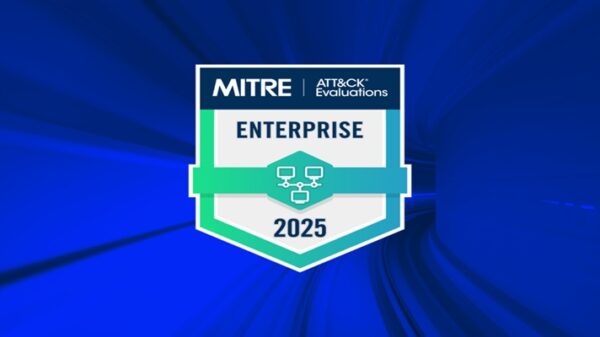During an era in which software supply chain attacks are becoming increasingly sophisticated, ensuring the authenticity and origin of software components has never been more critical. Code provenance, the ability to track the pedigree and evolution of software from development to deployment, has become an essential pillar of cybersecurity.
Digital fingerprinting techniques, like cryptographic methods embedded in source code and binaries, are transforming how organizations maintain software authenticity, prevent tampering, and secure software supply chains at scale.
The extensive use of open-source software, third-party dependencies, and cloud-native development has expanded the attack surface for cyber threats. Organizations rely extensively on external libraries, frameworks, and precompiled binaries with often limited visibility into their provenance. Supply chain attacks, such as the high-profile SolarWinds compromise and Log4j vulnerability, demonstrate the dangers of using unauthenticated software components. The risks to unprotected software vary from malware injection, in which attackers inject malicious code into widely used libraries or CI/CD pipelines, dependency confusion, in which attackers exploit package name conflicts to inject malicious versions of legitimate dependencies, backdoored binaries, in which compiled software is altered after release without the developer’s knowledge, and intellectual property theft, in which proprietary software is stolen, altered, or illegally redistributed.
Against such threats, cryptographic provenance tracking and digital fingerprinting mechanisms are being infused throughout the life cycles of modern software development. These techniques ensure software integrity and a tamper-evident record of modification, authorship, and utilization.
One of the basic mechanisms for following software authenticity is cryptographic hashing. Hash functions like SHA-256 generate source code files and binary fingerprints that can be employed to ensure software integrity at any place in the supply chain. Any small alteration of a file creates a very different hash, making any unauthorized alteration detectable. Hashes are widely used in integrity protection mechanisms, such as checksums for software downloads, blockchain-based software registries, and forensics of tampered software artifacts.
Digital signatures also facilitate provenance tracking by allowing developers to sign code using cryptographic keys. Public key infrastructure (PKI) ensures a signed software originates from an authenticated source. Code-signing certificates issued by trusted authorities enable users to authenticate software authorship and detect unauthorized modifications. Digital signatures are essential for verifying software package authenticity, authenticating firmware updates in embedded systems, and protecting API transactions in cloud environments.
Watermarking techniques allow unique identifiers to be embedded directly into source code or executables without affecting functionality. These watermarks are hidden identifiers that organizations can use to track software distribution and detect unauthorized copies. Software watermarking has seen widespread use in intellectual property protection, DRM enforcement, and forensic tracing of stolen or leaked code.
Blockchain-based provenance tracking leverages decentralized ledgers to immutably and tamper-proof record software changes, authorship claims, and cryptographic fingerprints. Smart contracts facilitate automated software authenticity verification and supply chain verification. Blockchain solutions are particularly valuable for tracking open-source contributions, regulatory compliance in regulated industries, and transparent software audit trails.
In order to implement effective software provenance and digital fingerprinting techniques, organizations must integrate such techniques openly into their development and deployment methodologies. Secure development lifecycles of software (SDLC) must involve cryptographic hashing of code at commit time such that any modification is identifiable. Code signing schemes must be enforced on all software artifacts before release, with rigid key management policy such that the unauthorized use is inhibited. Watermarking needs to be introduced in proprietary software for deterring counterfeiting and unauthorized redistribution, and blockchain-based ledgers can be used for real-time tracking of software modifications and ownership claims.
Governments and standards bodies are increasingly recognizing the importance of robust software provenance controls. Standards such as the National Institute of Standards and Technology (NIST) Cybersecurity Framework, the Software Bill of Materials (SBOM) standard, and the European Union’s Cybersecurity Act all demand greater transparency in software supply chains. Compliance with these standards ensures that software vendors and enterprises adhere to best practices in provenance tracking, which reduces the risk of software supply chain compromise.
As cyber threats continue to evolve, the ability to track software origin and authenticity will be a cornerstone of digital security. AI-powered code analysis for the next generation, homomorphic encryption for secure provenance attestation, and quantum-resistant cryptographic fingerprinting are some of the innovations that will continue to enhance the security of software supply chains. Organizations that implement digital fingerprinting and code provenance solutions early will not only minimize security risks but also establish trust in an increasingly complex and interconnected software ecosystem.
By embedding cryptographic fingerprints in source code and binaries, organizations can defend against tampering, unauthorized modifications, and supply chain attacks. With the digital landscape expanding, ensuring software authenticity at scale will become an essential part of safeguarding global infrastructure, enterprise software, and consumer technologies. In a world where software is the foundation of modern society, code provenance is the solution to ensuring trust, security, and reliability in the digital age.
![]()



























































